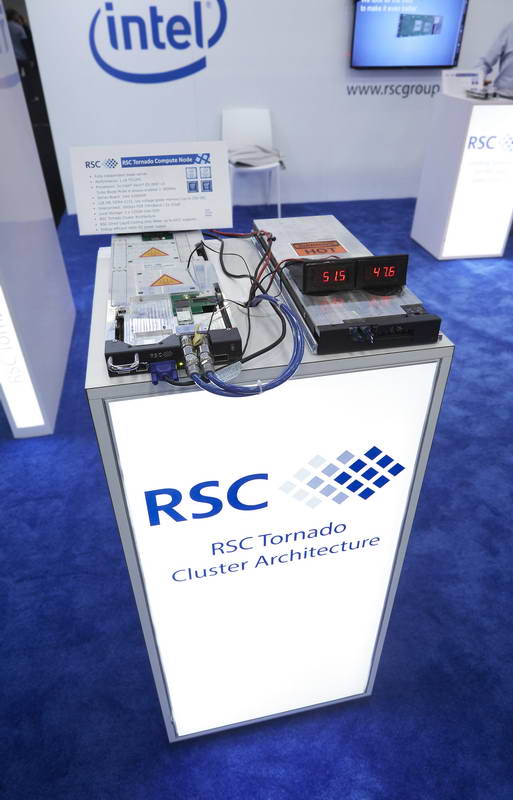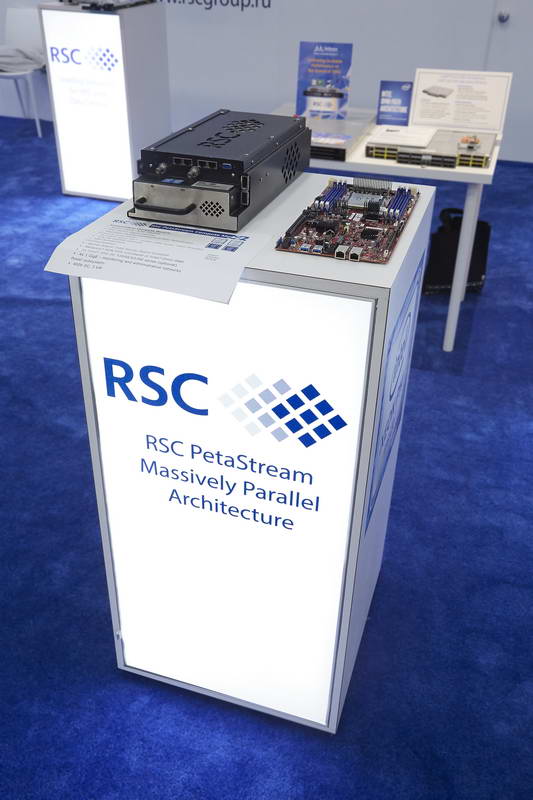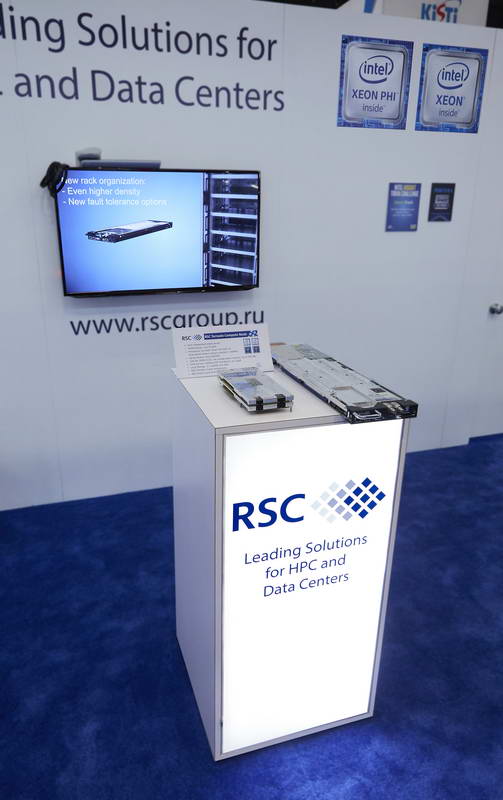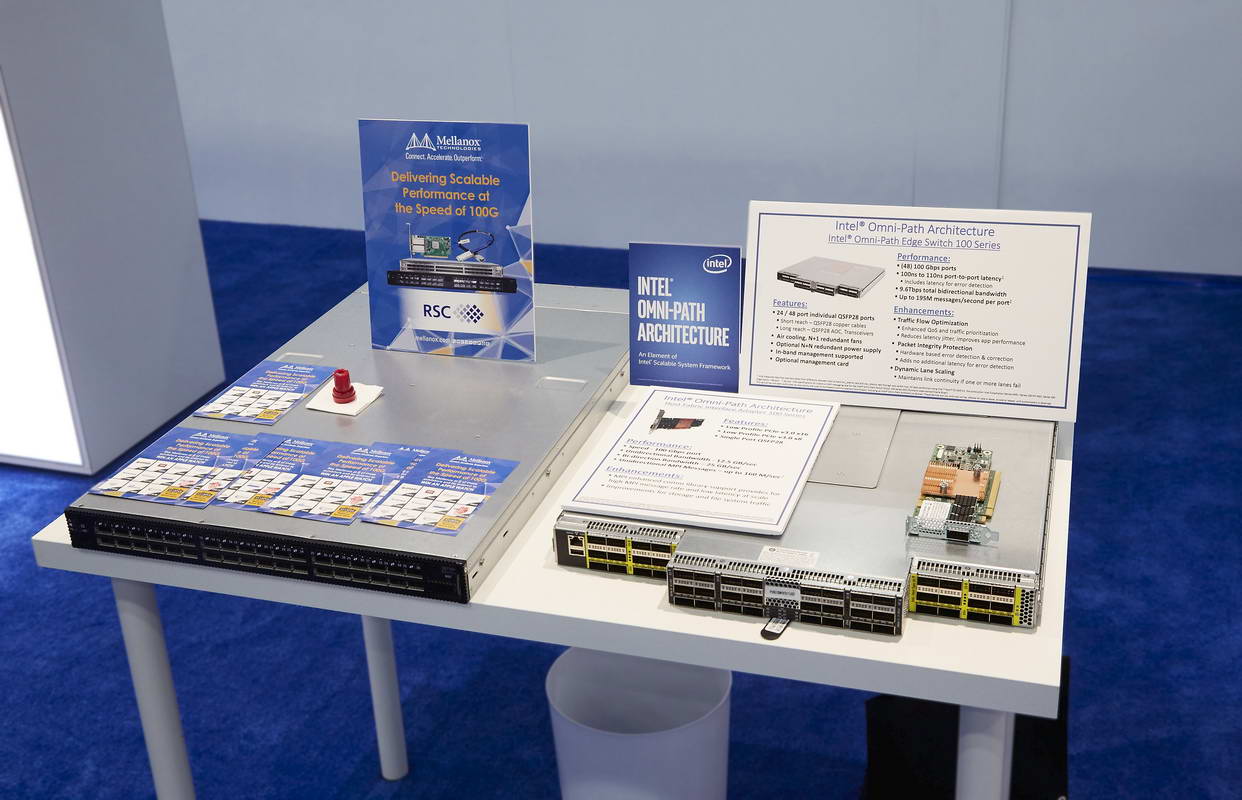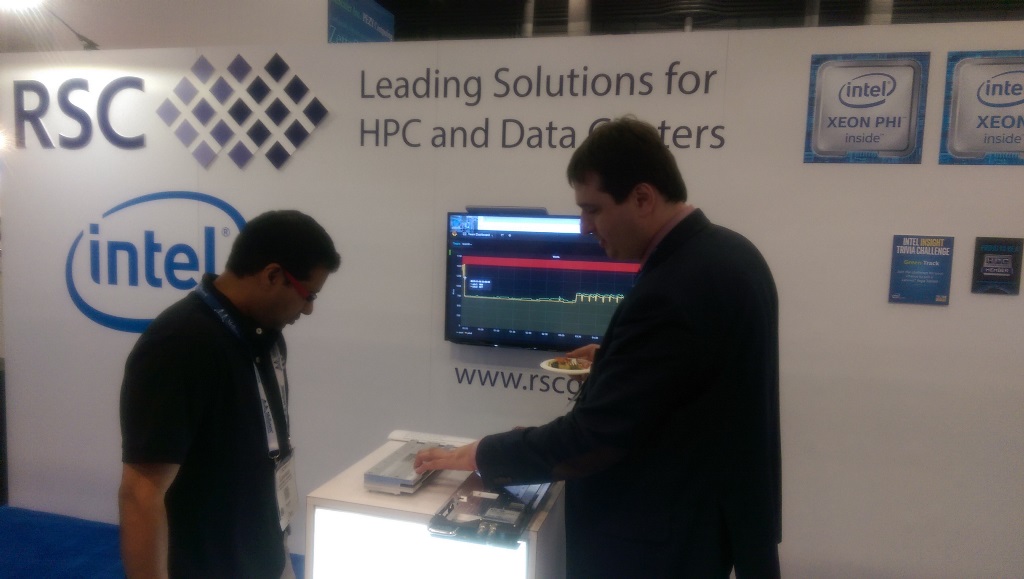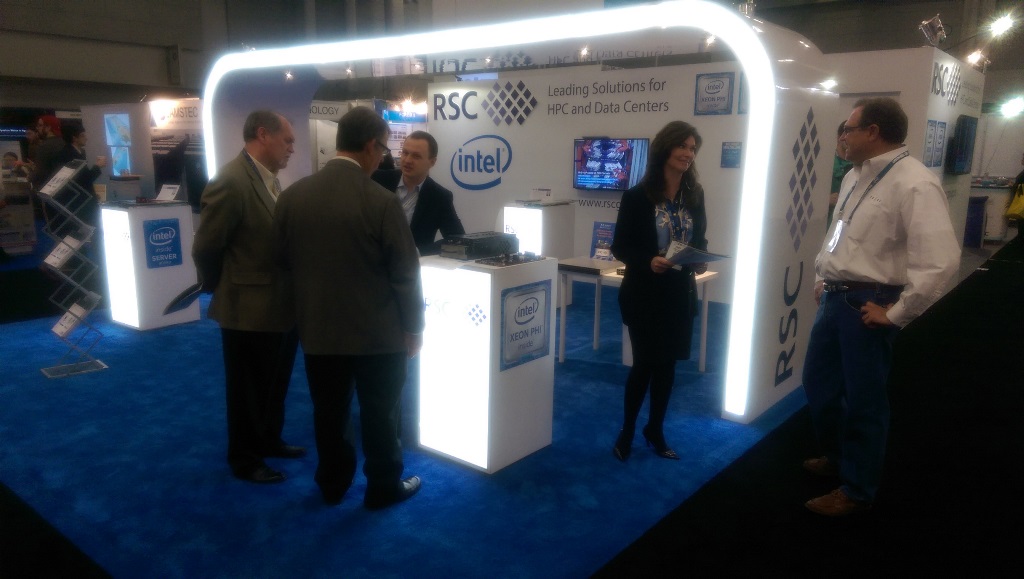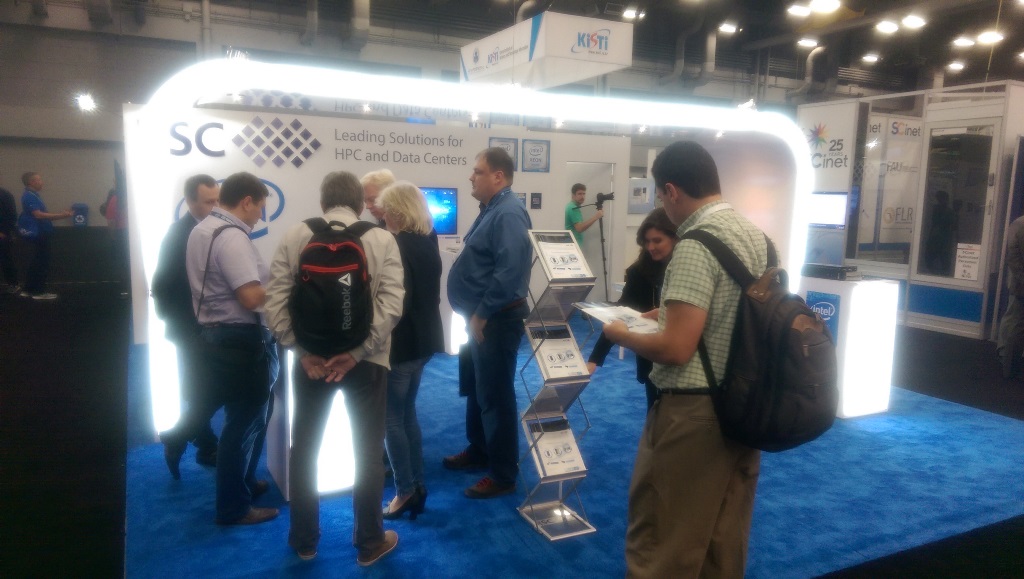RSC Group has demonstrated on its booth SC’15 at: updated range of solutions based on RSC Tornado cluster architecture and RSC PetaStream massively parallel architecture with Intel® Xeon Phi™; first samples of future Intel® Xeon Phi™ 2nd generation processor (Knights Landing) on a new Intel server board (Adams Pass), switches and adapters for Intel® Omni-Path fabric and Mellanox® EDR InfiniBand interconnect
Austin (Texas, USA), Supercomputing Conference (SC’15), November 20th, 2015 — RSC Group, the leading developer and system integrator of innovative solutions for high-performance computing (HPC) and data centers in Russia and CIS has demonstrated a new generation of its HPC solutions based on updated RSC Tornado cluster architecture at international supercomputing exhibition and conference SC'15 (first presented at ISC'15 in Germany). The new solutions feature reduced size, improved computing density and energy efficiency. Besides, it has demonstrated stable operation of computing nodes in "hot water" mode with cooling media temperature up to +65оC at the input and +70оC at the output, which is currently the global record of HPC industry and provides broad opportunities to recover energy used for computing. The company has demonstrated RSC PetaStream massively parallel architecture with multi-core Intel® Xeon Phi™ processors delivered earlier world records of computing density (1.2 Petaflops per cabinet) and power density (400 kW per cabinet).
RSC engineers actively work on development of a range of solutions based on new standard components demonstrated at SC’15 exhibition. Specifically, RSC booth featured the first samples of the future Intel® Xeon Phi™ 2nd generation processor (code named Knights Landing) on a new Intel server board (code named Adams Path), and switches and adapters for Intel® Omni-Path fabric and Mellanox® EDR InfiniBand interconnect. These components will form the foundation of the next generation of RSC solutions for high-performance computing and data centers with leading performance, energy efficiency and computing density. This confirms RSC's leading positions in the field of bringing the latest technologies to the market to support future development of the global supercomputer industry and to meet the growing demands of the customers.
The current generation of RSC solutions based on RSC Tornado cluster architecture has the following improved characteristics:
- improved physical density – up to 153 computing nodes per cabinet (previously 128),
- improved computing density – over 280 Teraflops per cabinet or 219 Teraflops/m3 with standard processors,
- support of installation of up to 256GB RAM per node (DDR4-2400 type),
- compact and energy efficient power supply module in computing node form factor providing efficient transformation of 220V AC to 400V DC and supporting parallel operation on common bus with redundancy from N+1 to N+N,
- improved energy efficiency – provides necessary conditions for stable operation of computing nodes in "hot water mode" at +65оC temperature at node input (current global record in the HPC industry),
- updated design of computing cabinet with support of new high speed inter-node communication technologies including Intel® Omni-Path fabric and Mellanox EDR InfiniBand interconnect,
- support of flexible cooling system configurations with redundancy of both single hydraulic regulation nodes and the entire system.
Innovative management and monitoring system of RSC solutions for high-performance computing also provides high availability, resistance to failures and ease of use. It can be used to manage single nodes and the entire solution, including infrastructure components. All elements of the system (computing nodes, power supplies, hydraulic regulation modules, etc.) have an integrated management module providing broad capabilities for telemetry and management. Cabinet design supports replacement of computing nodes, power supplies and hydraulic regulation modules (with redundancy) in hot-swap mode without interruption of system operation. Most components of the system (such as computing nodes, power supplies, network and infrastructure components, etc.) are software-defined, and this significantly simplifies and speeds up initial deployment, maintenance and future upgrades of the system. Liquid cooling of all components ensures their longevity.
Latest innovative approaches in new generation of RSC Tornado cluster solution enabled reduction of infrastructure costs within the scope of computing system development and provided capabilities for more flexible upgrades of single nodes and the entire computing system.
The current RSC Tornado generation is based on standard Intel server products including Intel® Xeon® E5-2600 v3 server processors, Intel® S2600KP server boards and Intel® SSD DC S3500/3600/3700 solid-state drives for data centers.
Therefore, RSC solutions for high-performance computing keep setting de facto high industry standards of physical and computing density, energy efficiency, reliability, availability and manageability.
Russian customers use solutions based on RSC Tornado cluster architecture with liquid cooling developed by RSC Group specialists in production environments for over five years. These solutions are installed and actively are using for modeling and calculation of a broad range of scientific, research and industrial tasks by the Saint Petersburg Polytechnic University named after Peter the Great (SPbPU), Joint Supercomputer Center of the Russian Academy of Sciences (JSCC RAS), South Ural State University (SUSU), Moscow Institute of Physics and Technology (MIPT), Roshydromet and other customers from different vertical industries.
Several customers have practically implemented combinations of different RSC computing architectures for building final solutions. For example, SPbPU and JSCC RAS successfully used RSC supercomputers based on RSC PetaStream massively parallel architecture with Intel® Xeon Phi™ processors and RSC Tornado cluster architecrure based on Intel® Xeon® processors within a single solution.

